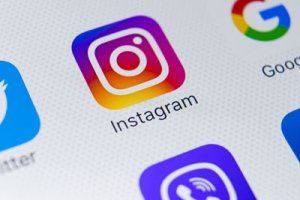Are you forgetting the Xennials?
February 27, 2019
 For the past several years, the world has been obsessed with Millennials. Employers grouse about them, marketers try to understand them, and Gen X parents hope their kids don’t become the stereotype. The general demographic cohort that we have labeled the Millennials were born between the early 80s through the early 2000s. That’s a considerable span, and as you can imagine, the people born in the 80s are experiencing life in a very different way than someone born in 1999. Enter the Xennials.
For the past several years, the world has been obsessed with Millennials. Employers grouse about them, marketers try to understand them, and Gen X parents hope their kids don’t become the stereotype. The general demographic cohort that we have labeled the Millennials were born between the early 80s through the early 2000s. That’s a considerable span, and as you can imagine, the people born in the 80s are experiencing life in a very different way than someone born in 1999. Enter the Xennials.
Many are now suggesting that the older Millennials (who are 30-45) are blending with the younger Gen Xers to form what has been defined as The New Adulthood or Xennials. This melded age group has more in common with each other, as opposed to either the Gen X or Millennial groups they actually fit into, based on their birth year.
This “in-between” generation has redefined what growing up looks like and it’s worth our time to learn more about this forgotten group of consumers. Xennials comprise 8% of the US population or approximately 25 million people and were typically born between 1977-1983. This group is also called the “Oregon Trail Generation” in reference to a popular computer game when they were growing up.
One of the more telling facts about this group is that they had analog childhoods and digital adulthoods. They were born without the internet but used it to find their first post-college jobs. They’re the last generation to remember using the landline phone to call their friends to make plans for the weekend.
Here are some characteristics of these New Adults:
- Many of them will never work for an employer but instead will move right into being an entrepreneur
- They marry later
- Many of them are opting out of home ownership
- International travel is a priority
- They are tech savvy but not tech absorbed
- They are very financially literate and comfortable managing their money
From a marketing perspective, what will ring true for this target audience?
Nostalgia plays well: This group invented social media, but they remember how good life was without it. They like to reminisce about the days when everyone wasn’t connected 24/7, and you still watched TV to get the day’s news. Shows like Stranger Things appeal to their fondness for the 80s, and they get credit for the resurgence in vinyl record sales and Fuller House.
The defining moment of their childhood was 9/11, so they also tend to demonstrate more patriotism and believe in the country’s resilience. Family bonding is very important to them, and they love to cook and entertain. Interestingly, they’re also most likely to pay professionals to do chores to save time, and they’re the ones who brought about the open concept trend.
They’re natural optimists: Another nickname for this generation is the “lucky generation.” They were old enough to grow up without the challenges of the digital age like cyberbullying, sexting and having their every embarrassing moment shared with the world. They grew up as the Berlin Wall fell and Apartheid ended.
They got their first job before the recession and bought their first home (if they bought one) before property prices hit the roof.
They’d rather be associated with Gen X than Millennials: There’s no bigger insult to a Xennial than to assume they’re going to behave like the stereotypical Millennial. They see themselves as very hard-working savvy investors and view their entrepreneurialism as a way of continuing the American Dream.
They straddle the tech fence: This micro-generation loves to use innovative devices that improve their life like fitness bands, smart appliances, and VR/AR headsets. But they disregard some of the more frivolous social networks like Snapchat and still subscribe to magazines and newspapers.
More



 CSO Insights, the research division of Miller Heiman Group, the world leader in improving sales performance through research, training, and technology, today announced the official release of its “
CSO Insights, the research division of Miller Heiman Group, the world leader in improving sales performance through research, training, and technology, today announced the official release of its “



